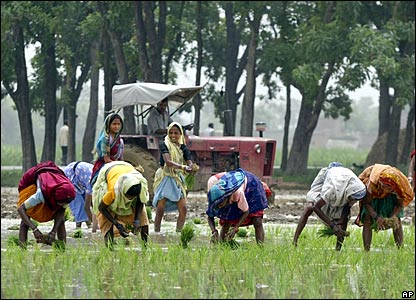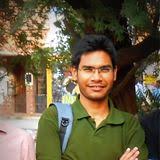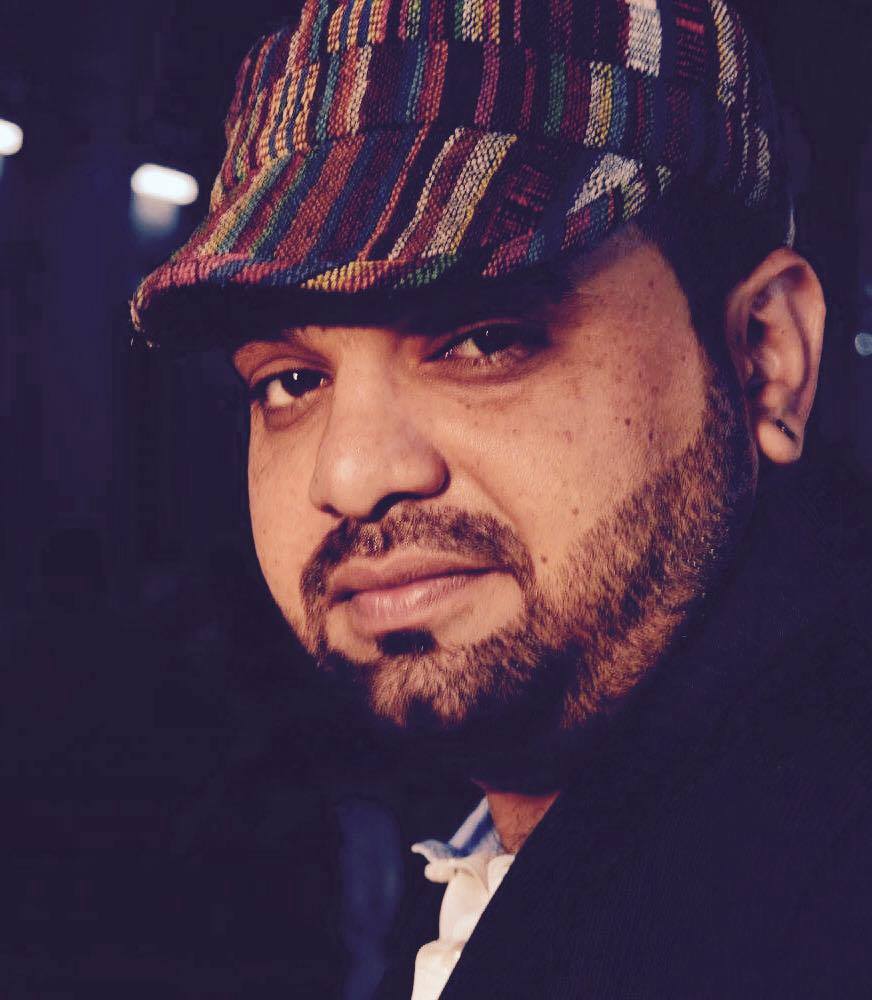Anu Ramdas
Adivasi, dalit and lower shudra women are more often co-workers in the fields, kilns, mines, factories and neighborhoods than co-learners and professionals in institutions and organizations. The reverse is true for women belonging to upper castes. Majority of women are caught in manual occupations and only a tiny section of women get to be professionals. This lends itself to interrogation in many ways and depending on which end it is proceeding from, solutions will or will not emerge.
To delve into why labor remains rigidly divided among South Asian women, there must exist a sense of injustice at this division of labor. There has to be a deeply felt need to flatten this imbalance of opportunities between castes, occupations and women. Does anyone benefit from prolonging the status quo? Who is likely to engage with this question with a sense of urgency? Whose realities are scarred by this state of affairs? Whose realities will remain undisturbed even as they intellectually engage with this?

Names measure distances
Caste and patriarchy combine efficiently to split occupations along various filters. A caste society has upper caste men availing the most and the best, while upper caste women avail more and better opportunities than us, at all times, at our cost. The increased presence of women in new professions is welcome but this female empowerment on a mass scale is restricted only to upper caste women. Further, it massively disguises the fact that this empowerment has been facilitated by the consumption of female labor –of lower caste, dalit and adivasi women domestic workers.
Pick any forward caste name. Chatterjees, Menons, Iyers or Joshis and frame this question: What are the chances of their daughters not having an open route to obtain a college education, gain skills and jobs that lead to professional lifestyles? 50% of them? 25%? 1%? It is almost zero percent.
Do the same exercise with caste names from lower shudra, dalit castes, and tribes’ names. The chances of closed routes for daughters from majority of these castes and tribes can be anywhere from 50 to 99%.
Try another thought experiment: look for women’s names that end with Chatterjees, Menons, Iyers or Joshis in NREGA lists. 1%? 0.5%? 0.005%? It is most likely zero percent.
Want to scan the NREGA lists for lower shudra, dalit and tribes names?!
A simple exercise like this gives us the concrete linkages between: caste, labor and women’s empowerment. That is, access to respectful and equal opportunities for professional capacity building is determined, privileged and sustained by caste.
Do I want to indulge in analyzing how the locations of Chatterjees, Menons, Iyers or Joshis and the caste names of women in NREGA lists are reflectors of class and not caste? That can only be a subsequent line of reasoning.
For now, lets talk women’s caste location, labor and liberation. Let’s begin with the politics of naming caste locations.
~~
Conversations across caste
Caste as a racist ideology, practiced by individuals, institutions and the state has been documented, examined and analyzed by members of the marginalized castes, since ages. Caste permeates and directs the entire range of human perception in South Asia. It segregates society into innumerable slots, servicing a dual purpose: inhibit the human potential of some humans and privilege others.
To maintain the highly complicated grid of caste barriers, language is deployed as one of the chief guardians against trespassers. In essence, all conversations are powered by caste; across religions, languages and regions, both consciously and unconsciously. The denial of its all pervasive influence in daily life by any South Asian is just that, denial.
The question I want to focus on is: can there be debates on caste without the acknowledgment of the caste location of the debaters?
In recent debates, naming the caste location of upper caste academics and feminists has seen them being hurt by it, refer to it as name-calling, or gingerly admit to its political implications. Their dilemma: how to make this go away from discourses on caste? Ignore it or shame the dalitbahujan academics and anti-caste activists into believing that naming caste locations is an illegitimate intellectual practice.
I am mainly writing this for young people who are weighing in this shaming aspect of how we conduct and participate in caste discourses. To them, I would like to convey that the ‘politics of naming’ in the context of caste has less to do with upper caste people and a lot to do with the internal political practices of marginalized communities adversely affected by caste. I will try to use examples wherever possible.
Savari is a space for conversations between adivasi, dalit and lower shudra women. Members represent a part of the wafer thin layer of college-educated women from marginalized castes and tribes. Caste and gender equity struggles for us involves challenging both men and women situated in graded caste hierarchies to respect our right to lead lives as full citizens. Of the many topics that we converse on, exclusion from mainstream knowledge production processes is one, as I noted here.
Institutions and classrooms have no place for our history, immediate concerns or our aspirations. As a consequence, knowledge about ourselves and about each other remains partitioned and inaccessible. And like immigrants in our own country, we find ourselves consuming and regurgitating the dominant brahmanical worldview. In which, indignity and inequality towards fellow citizens is normal. Which means we have to participate in upholding the exclusionary principles against our own communities and others in return for marginal acceptance or existence within ‘modern and secular spaces’? This is a trap for silencing our voices against caste prejudice, hostility, violence and the willful ignorance of entire communities.
Institutions are sustained and operated along well oiled networks. One cannot net-work unless one is within the net. As first generation students and professionals we exist outside the mammoth caste nets that run institutions and organizations. This renders us vulnerable to co-option or disaffection from being alert and agitated about the lack of equal and respectful opportunities for all the girls and women from our communities.
Naturally we seek out anti-caste literature, and when possible we attempt to create spaces and groups that keep us connected to our common struggles, Savari is one such example.
It is not ‘what’ we know, but ‘who’ we know (A R)
Softskills, networking connections are paraded as merit, how can we even begin mastering the ‘who we know’ (G A)
There is a constant policing by the mainstream which deliberately keeps away even those who succeed in networking, and succeeding in the Indian situation as a dalit, bahujan, adivasi especially as a woman is an almost impossible task.
I strongly feel that we should say to hell with academics and create our own spaces – but some strongly disagree with this too -and I understand their point. (J R)
Had struggled five years after law school for several reasons with no good job, no money, one of the reason was there was no dignified space for an adivasi girl in the private/government sector, I was labeled incompetent, had no relevant experience etc… now when my voice against prevalence of caste discrimination in the industry is becoming insurmountable, upper caste nuts who want me to shut up, call me and say ‘we’ll find you a great job in a good law firm, just stop arguing caste is everything, there is no caste, not atleast in cities, maybe in remote villages’. (X X)
Nothing is more telling about your community’s marginal status than being the only lawyer, the only PhD, only teacher, only student, only clerk, only engineer from it inside these ‘modern’ spaces. When will this alienation cease? When will our fellow sisters from our communities become our colleagues, seniors, juniors, teachers and administrators? Next generation? 5th, or 10th generational cycle? Current indicators point to an indefinite lag before equal opportunities are made available for all the girls and boys from our castes and tribes.
Given the difficult terrain and topics, conversations at Savari follow certain dynamics, some of it natural, some structured. We work at productive conversations by recognizing our varied, sometimes overlapping, sometimes conflicting histories, ambitions, anxieties and realities. In our struggle for equality and dignity in a caste society, we have to actively listen, critique and process criticism from within and across adivasi, dalit and bahujan communities.
Naming our own caste locations
As a group of individuals whose personal and community histories’ have been anointed with shame for our very birth in a particular caste or tribe, the act of voluntarily acknowledging our caste location openly to each other is a painful process, and only gradually empowering. This is natural given that each one of us spends enormous amount of mental energy hoping to deflect situations where our caste might further alienate, inhibit and debilitate us. In solitary journeys we have charted our way to confront this hostile society. A society that prides itself in the lineages of some castes and shames others deserves to be atomized into nothingness. That is the kind of fury each of us carries. If we have managed to channel that energy into constructive paths, it is solely due to our singular faith in Ambedkar, Phule and Savitribai’s vision of a caste annihilated and gender just society.
At Savari, one of the explicit first practices while conversing among ourselves is to locate oneself as clearly as possible. We do this because we are training ourselves to be alert to not allow a situation where intellectual authority gets tilted unfairly or settles itself into a gradation. Caste, religion, political affiliations and even age as identifying axes are laid out, as each of these may carry with them inherent privileges and vulnerabilities. Power, however miniscule cannot be neutralized by keeping it hidden. We name and interrogate everything.
Nothing that I have said so far should be new to scholars and feminists familiar with colored women’s assertions, intersectionality and the Black women’s work on critical race theory. But during the Ambedkar cartoon controversy we saw academics who claim pro-dalit, anti-caste and feminist perspectives eloquently describing hurt sentiments because their caste location was being named by dalitbahujan debaters. Following this, articles on caste in the mainstream media, social media and on blogs refer to the dalitbahujans’ naming caste locations as an intellectual tactic used solely to put them on a defensive mode. This is a ridiculous misreading of the politics of naming caste locations.
Names of entities carry meanings, messages and associations, as do the names of castes. The taxonomy of caste names is an ontology of hierarchical associations. Each and every caste name can be relationally connected to any other caste. This living taxonomy has one of the largest user communities. As a piece of data, each caste name carries loads of complex information that is immediately perceived and processed by users. It simultaneously speaks of power and powerlessness. It throbs with shame and racist pride. It reveals the history of oppression and the history of resistance. In simple terms, caste names locate the graded inequalities of this society.
So, how can we debate caste without naming the caste location of the debaters?
Let us consider the possibility that the bearers of the words and actions of caste exclusion, humiliation and indignity towards fellow humans are sometimes unaware of the extent to which caste animates their being. They are genuinely puzzled by the sharp reactions from assertive members of the lower castes and outcastes. And therefore are very hurt by the politics of the marginalized communities. My sympathies to them.
But, is it our burden to educate them towards obtaining the skills of civil conversations with fellow citizens? Is it our responsibility to educate them to become aware of the elemental truth about human equality, and that it ought to reflect in their language and actions? The marginalized has to also play a parental role?
Casteless Academe
When academics, who in my book are professionals paid by the people via the state to pursue truth, deny their participatory role in maintaining caste barriers, what is one to do? Accept without proof that they have magically stepped outside this reality while they address caste, objectively? In other words, we are to see academics studying Indian society as casteless people! This, when we are faced with universities and institutes boasting 95% of faculty belonging to a handful of castes. Are we to assume that these academics played no role in excluding the rest of the Indians from participating in publicly funded knowledge production processes? How is this reality different from the situation in media and corporate houses as well as the bureaucracy, which have zero diversity at the decision-making levels?
An academe that is so completely overrepresented by higher caste names wants immunity from scrutiny about their caste locations? How dismally out of sync with the pursuit of truth!
~~~
To be continued.
Image courtesy the Internet.
This article is also published in Savari.










